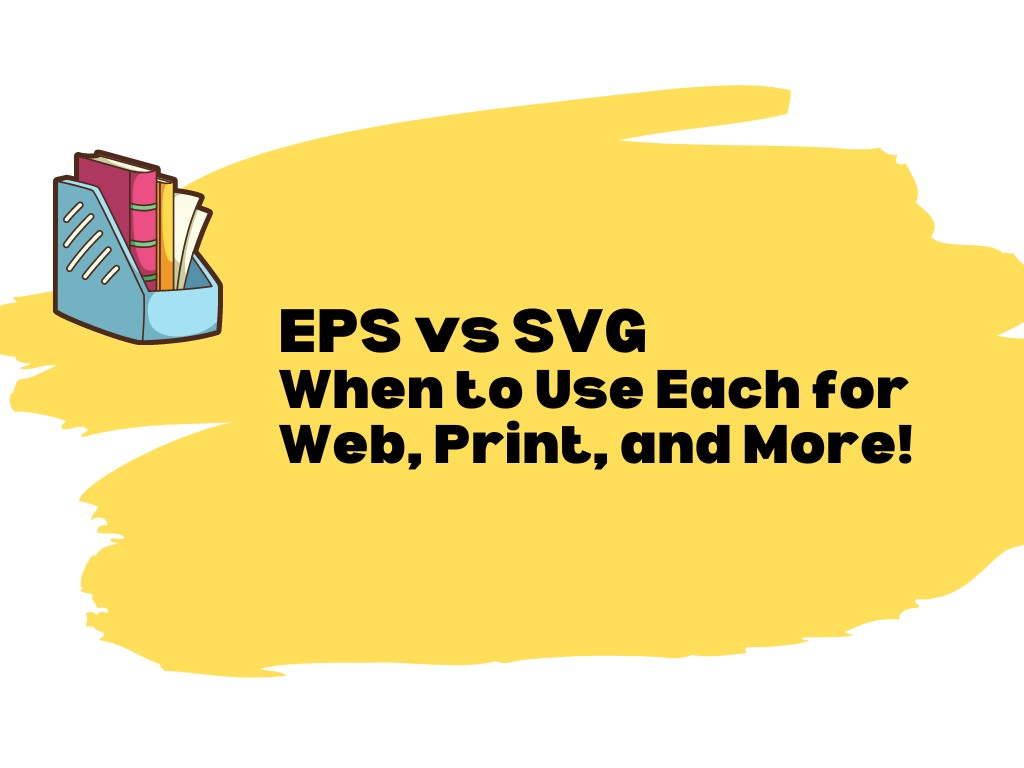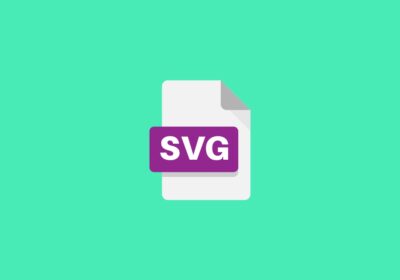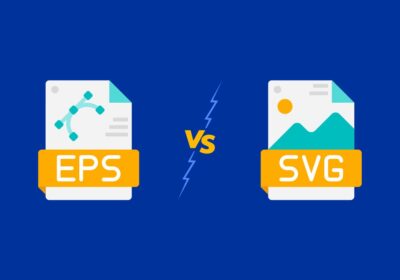
EPS vs SVG: When to Use Each for Web, Print, and More!
Welcome to our in-depth exploration of the age-old debate: EPS vs SVG. Whether you’re a web designer, printer, or Cricut enthusiast, it’s essential to understand the strengths and best use cases of each file format. In this blog, we’ll break down the differences between EPS and SVG, and provide guidance on when to use each for various applications. So, let’s dive in and demystify the world of scalable vector graphics!
What is EPS?
EPS stands for Encapsulated PostScript, which is a vector graphics file format commonly used for high-quality images and prints. It is a versatile format that supports both raster and vector data, making it suitable for various design applications. EPS files can be easily resized without losing quality, making them ideal for logos, illustrations, and other graphic elements. They are widely used in professional printing processes such as offset printing, ensuring accurate and crisp reproduction of designs. EPS files are a powerhouse when it comes to maintaining image quality across various applications, especially in the realm of professional printing.
Definition of the EPS format
The EPS format is a specialized file type that can contain text, vector graphics, and bitmap images. Designed to be compatible with different operating systems and software applications, EPS provides flexibility in design workflows. This format allows for the seamless integration of graphics into documents while preserving their high-quality appearance. EPS files are typically created using illustration software like Adobe Illustrator or CorelDRAW. EPS truly offers a wide range of capabilities for designers and professionals, making it a popular choice for various design applications.
History of the EPS format
The EPS format was developed by Adobe Systems in the 1980s to create a reliable standard for exchanging graphical data between different computer platforms. It gained popularity due to its ability to maintain image quality regardless of scaling, contributing to its widespread adoption in the design and printing industries. Initially limited to black-and-white images, EPS evolved to support color graphics with the introduction of PostScript Level 2 in the early 1990s. Over time, advancements in technology have led to improved compatibility and functionality of EPS files across various software programs. These developments have solidified EPS as a versatile and enduring format in the realm of graphic design and professional printing.
Key features of the EPS format
The EPS format boasts an impressive ability to maintain image quality and integrity, even when scaled or printed at varying resolutions. This makes it a reliable choice for ensuring that designs look crisp and professional across different applications. Additionally, its support for both CMYK and RGB color modes caters to the diverse needs of print and web-based designs, providing flexibility in color control. EPS files can also store clipping paths and transparency information, granting designers precise control over how images are displayed or printed. The compatibility of EPS with popular design software like Adobe Creative Suite ensures a seamless workflow for designers and graphic artists, enhancing their efficiency and creativity.
What is SVG?
Scalable Vector Graphics, known as SVG, is a widely-used format for two-dimensional graphics that offers support for interactivity and animation. Based on XML (Extensible Markup Language), it’s easy to create and edit using any text editor. One of the key advantages of SVG files is their resolution independence, allowing them to be scaled to any size without losing quality, making them perfect for both web and print applications. Additionally, SVG format is well-supported across different web browsers and can be created and edited using various design software, providing flexibility and accessibility for designers.
Definition of the SVG format
The SVG format has been an open standard developed by the World Wide Web Consortium (W3C) since 1999, to establish a consistent vector graphic format for the web. Unlike raster images, SVGs are created using mathematical equations to define the lines, curves, and colors of the image, resulting in smaller file sizes and superior scalability. One of the primary benefits of SVG is its capacity to be indexed, searched, scripted, and compressed without compromising quality or significantly increasing file size. Furthermore, SVG supports a wide range of shapes, including rectangles, circles, ellipses, and polygons, as well as gradients, patterns, and filters, adding to its versatility and value for web and print applications.
History of the SVG format
The development of SVG was initiated as a response to the constraints of other image formats, aiming to offer a more adaptable and versatile solution for web graphics. As time progressed, SVG has grown to incorporate additional features, including support for interactivity through scripting and animation via SMIL (Synchronized Multimedia Integration Language). With advancements in web technologies and browser capabilities, SVG has emerged as a preferred format for responsive web design, attributed to its scalability and adaptability. Its extensive support across modern web browsers has firmly established SVG as an essential component of web development in today’s digital landscape.
Key features of the SVG format
SVG offers robust support for advanced styling options using CSS, granting designers precise control over the visual presentation of graphics. Its capacity for transparency and gradient fills enhances the richness of design elements, creating visually stunning outcomes. Additionally, the flexibility of SVG is evident in its direct embedding within HTML documents using tags, or its inclusion via the CSS background-image property, catering to diverse integration needs. The XML-based nature of SVG files allows for programmatically manipulation using JavaScript or server-side scripting languages, enabling the creation of dynamic visual content. This, coupled with the freedom to optimize performance through caching or lazy-loading resources, underscores the adaptability and efficiency of SVG for web and print applications.
Head-to-Head Comparison EPS vs SVG
When it comes to choosing between EPS and SVG files, there are key considerations that can help guide your decision for different design projects. EPS files, while larger in size, are well-suited for print projects requiring high resolution. Their support for CMYK color mode makes them ideal for print design, offering precise color control. On the other hand, SVG files shine in web applications, offering excellent software support across various platforms and browsers. Their scalability without compromising quality makes them perfect for responsive web designs and icons, making them a strong contender for web-based projects.
File size
EPS files tend to have larger file sizes due to their complexity and ability to store high-resolution image data. On the other hand, SVG files typically have smaller file sizes as they are based on XML text files, which makes them more suitable for web use and faster loading times. The size of an EPS file can make it challenging to share or upload online due to its larger storage requirements, unlike the more lightweight SVG format. For projects with strict file size limitations, using SVG over EPS can help optimize website performance and user experience. This can significantly impact the overall user experience on a website, ensuring faster load times and smoother navigation.
Software support
When working on design projects with a focus on software and web compatibility, it’s important to consider the format of the files being used. SVG, in particular, stands out for its broad software support across design programs and modern web development tools like HTML5 and CSS3. This ensures consistent rendering across various devices and screen resolutions, making it a reliable choice for web-based projects. Choosing SVG over EPS can also help prevent compatibility issues when collaborating or sharing design assets online, highlighting the advantages of this versatile format for contemporary design workflows.
Color support (CMYK vs RGB)
Understanding the distinction between CMYK and RGB color modes is crucial in deciding whether an EPS or SVG file would be most appropriate for a particular project. EPS is the preferred choice for projects requiring CMYK color mode, such as professional print materials like brochures, posters, and business cards. On the other hand, SVG is best suited for projects utilizing RGB color mode, such as digital illustrations, logos for websites, and other screen-based graphics. For designs that require a smooth transition between different color modes, using both EPS and SVG formats strategically can ensure optimal color representation across various mediums.
Scalability
The infinite scalability of “Scalable Vector Graphics” (SVG) truly lives up to its name, ensuring that images retain their quality and clarity regardless of the device or screen size. On the other hand, “Encapsulated PostScript” (EPS) also offers scalability, but it may necessitate additional measures to ensure consistent rendering in various applications at different sizes. Given this, the flexibility of SVG’s scalable nature makes it an ideal choice for responsive web design elements like logos, icons, and illustrations. Ultimately, choosing the right format based on scalability needs is crucial in delivering a seamless visual experience across diverse digital platforms, catering to the ever-evolving demands of web and digital design.
When to use EPS
When it comes to professional print design projects like brochures and flyers, EPS truly shines. Its impressive ability to maintain high-quality resolution and scalability ensures that designs appear crisp and clear on printed materials. EPS excels in handling intricate artwork with multiple layers, effectively preserving the quality of each layer. Moreover, it is highly recommended for projects that require compatibility with older software systems, providing seamless integration and accessibility across different platforms. For those who prioritize precise printing, EPS does not disappoint, retaining sharp lines and smooth curves without any pixelation, resulting in a flawless final output.
Professional print design (brochures, flyers, etc.)
When it comes to professional print design, EPS truly stands out. Its exceptional scalability and ability to preserve intricate details and fine lines make it a go-to choice for projects like brochures and flyers. Designers can rest assured that EPS files are compatible with professional printing processes and software, enabling them to maintain control over color accuracy and image integrity. Additionally, using EPS format for commercial printing can help prevent unexpected formatting issues or loss of image quality, ensuring a seamless and high-quality final output. EPS certainly proves its worth in the realm of professional print materials.
Complex artwork with layered elements
As someone who has worked extensively with complex artwork containing layered elements, I can attest to the benefits of using EPS. It provides a non-destructive editing environment, allowing me to maintain the quality of each element within the design. The vector nature of EPS is especially advantageous for intricate designs that involve gradients, patterns, and transparency effects, ensuring a consistent look across different platforms. One of the key advantages I’ve found is the level of control EPS offers over the appearance of each component, making collaboration with other professionals smooth and efficient. Furthermore, EPS allows for the inclusion of text without compromising quality or risking distortion when scaling or manipulating the design, making it a versatile and reliable tool for fulfilling intricate design requirements.
Maintaining compatibility with older software
When aiming to share files across different platforms or software versions without compromising visual integrity, opting for EPS can prevent compatibility issues from arising. Choosing EPS ensures compatibility with legacy software systems commonly used in certain industries or by specific vendors for design and printing purposes. Additionally, EPS files serve as a reliable archival format for preserving designs over time and guaranteeing access to historical assets regardless of evolving software standards. Utilizing EPS can also help avoid conversion errors or loss of critical design elements, ensuring seamless integration with older software versions or proprietary systems.
When to use SVG
The versatility of SVG truly shines in web design and user interfaces, especially for icons and logos, thanks to its unmatched scalability and ability to uphold quality across diverse screen sizes. When it comes to creating graphics meant to adapt to various screen dimensions, SVG emerges as the top choice, ensuring that images stay sharp and clear, regardless of the display specifications. Furthermore, SVG’s prowess in facilitating animations and interactive elements for websites leads to seamless transitions and dynamic visuals, all while maintaining a compact file size. Notably, cutting machines rely on vector-based cut files, making SVG the perfect option for crafting designs that can be effortlessly scaled without sacrificing quality.
Web design and user interfaces (icons, logos)
When it comes to web design and user interface elements, SVG format takes the spotlight. Its exceptional scalability facilitates the crisp and clear display of icons and logos across diverse devices, ensuring that intricate details remain intact, even on high-resolution screens. Additionally, SVG’s small file size not only maintains visual appeal but also enhances website loading times, making it an efficient choice for web-based graphics.
Scalable graphics for various screen sizes
SVG’s scalability shines in its ability to effortlessly cater to various screen sizes, ensuring that graphics maintain consistent quality across different devices. This eliminates the need to create multiple versions of an image for various screen resolutions, ultimately saving time and effort in the development process. By utilizing SVG, the task of adapting graphics for responsive web design becomes simplified, allowing them to seamlessly adjust to different viewport sizes without compromising image clarity. For applications requiring adaptable visuals, SVG proves to be a valuable asset, providing flexibility without sacrificing visual quality.
Animations and interactive elements
SVG’s adaptability extends to animations and interactive elements, making it an excellent choice for incorporating dynamic visual features into websites and applications. Whether it’s seamless transitions, fluid movements, or interactive functionalities, SVG handles these with ease while keeping file sizes lightweight. What’s more, the use of SVG for animations eliminates the need for extra plugins or heavy script libraries, ultimately enhancing performance. Additionally, interactive elements crafted with SVG remain fully responsive and visually captivating across an array of devices, ensuring a consistent user experience without any compromises.
Cut files for cutting machine
So, when I create designs for cutting machines such as Cricut, I always make sure to use SVG format. This format is great because it ensures that the cutting is very precise since it’s based on scalable vector paths. With SVG files, I can easily adjust my designs to fit specific cutting dimensions without losing any quality. Another advantage is that SVG files make it simple to resize designs while keeping the edges and details sharp, which is perfect for when I need to do intricate and precise cuts.
Conclusion
In conclusion, both EPS and SVG formats offer unique advantages based on specific design needs and applications. EPS stands out as a reliable choice for professional print design and complex artwork, especially when compatibility with older software is a priority. It serves as a dependable archival format, ensuring the preservation and accessibility of designs over time. On the other hand, SVG excels in web design, user interfaces, and cutting machine applications, thanks to its exceptional scalability, compact file size, support for animations, and precision in cut files. Understanding the strengths of each format is crucial in leveraging their capabilities effectively across various design projects, whether for print, web, or other visual applications. Be sure to assess the specific requirements of your design projects to determine the most suitable format – whether it’s EPS or SVG – to achieve the desired results with efficiency and quality.




2 Comments